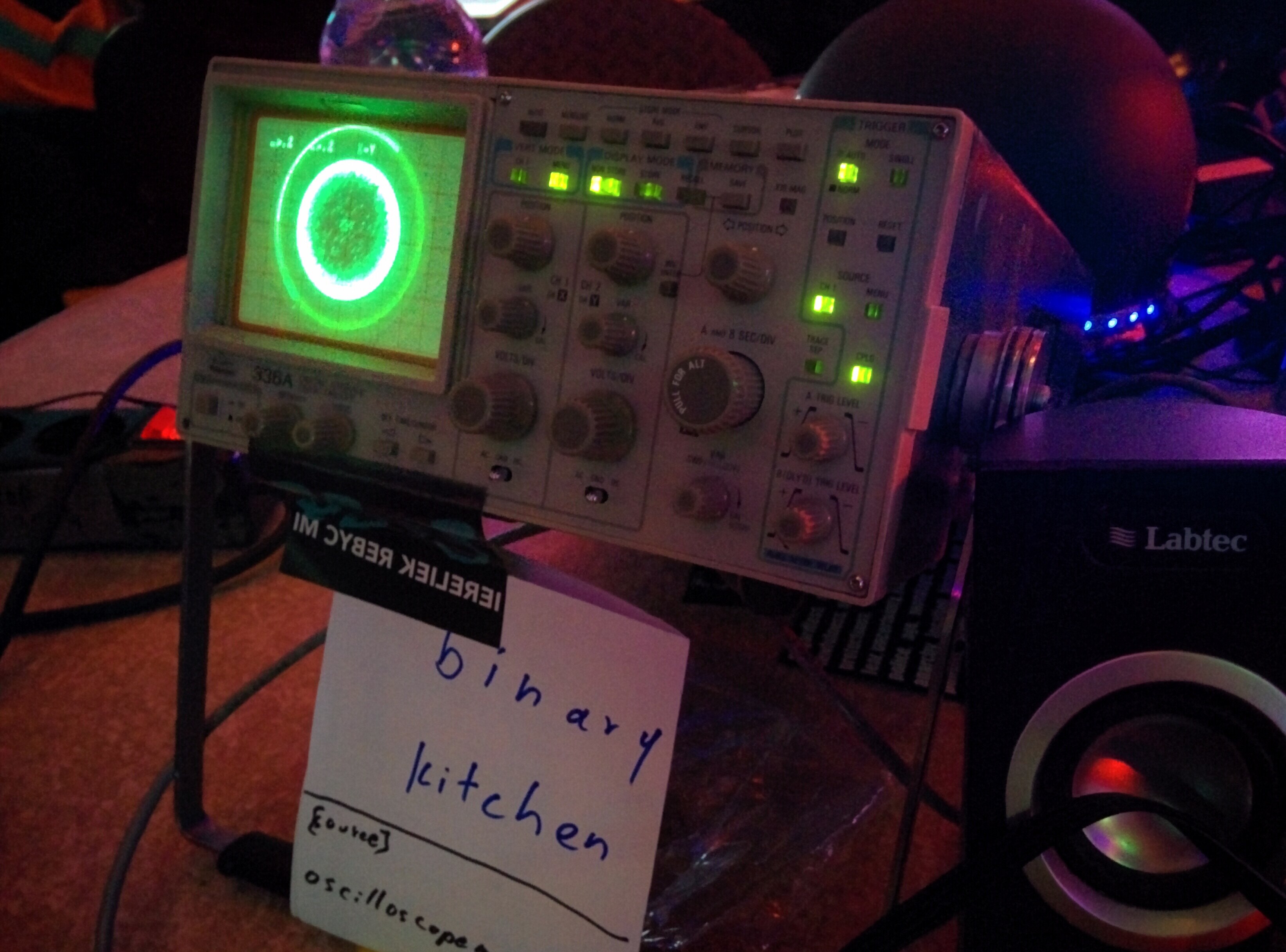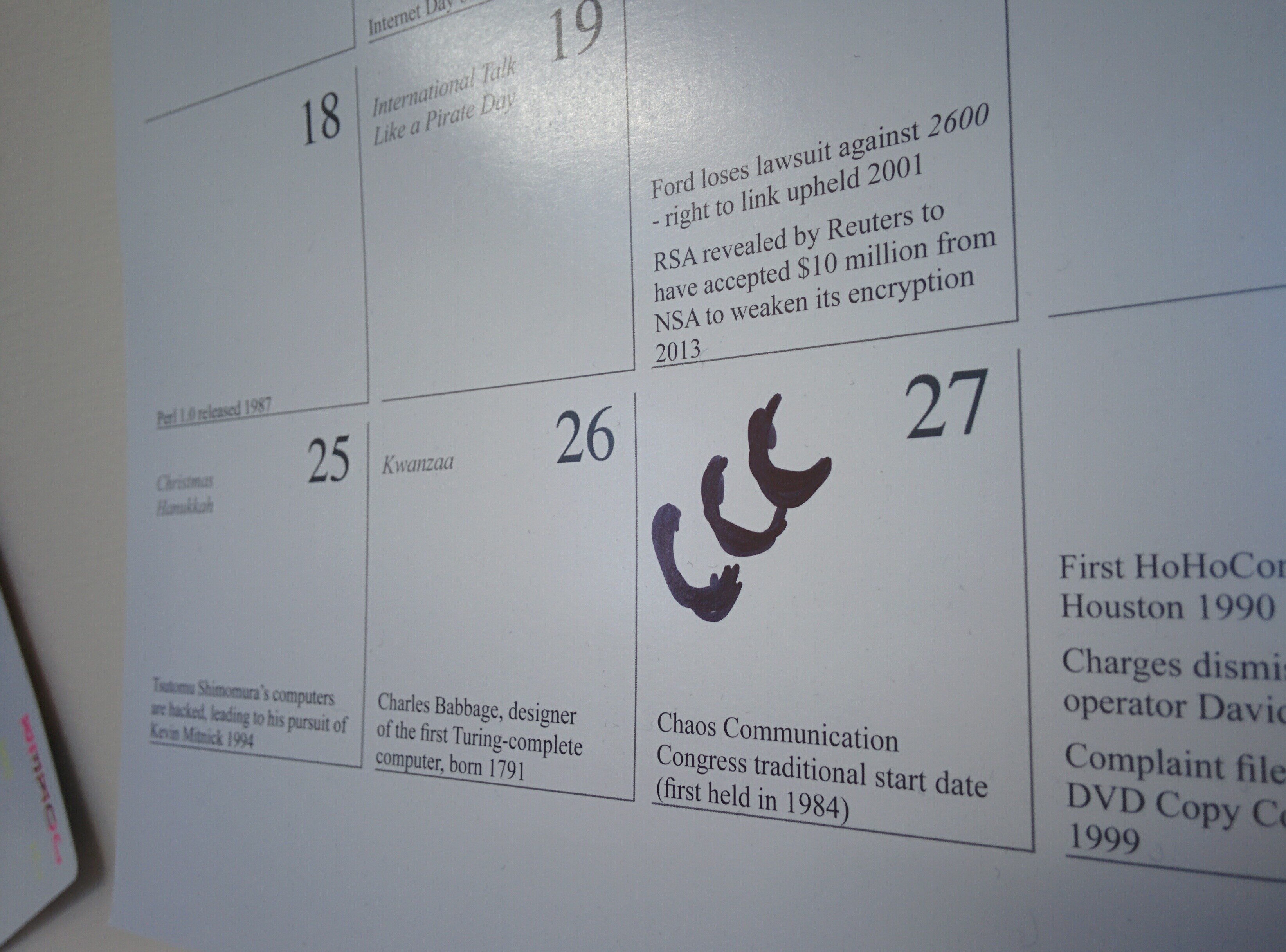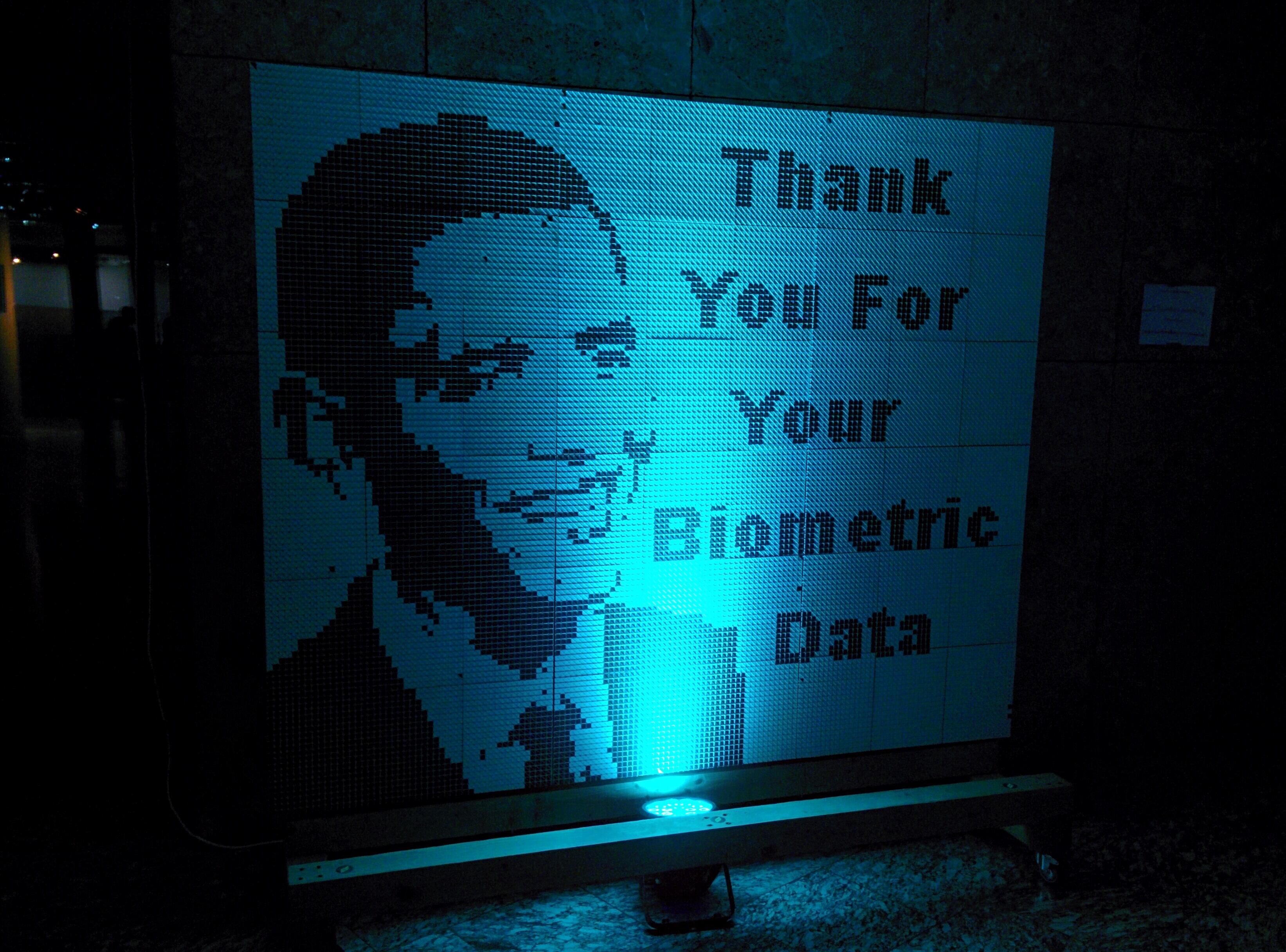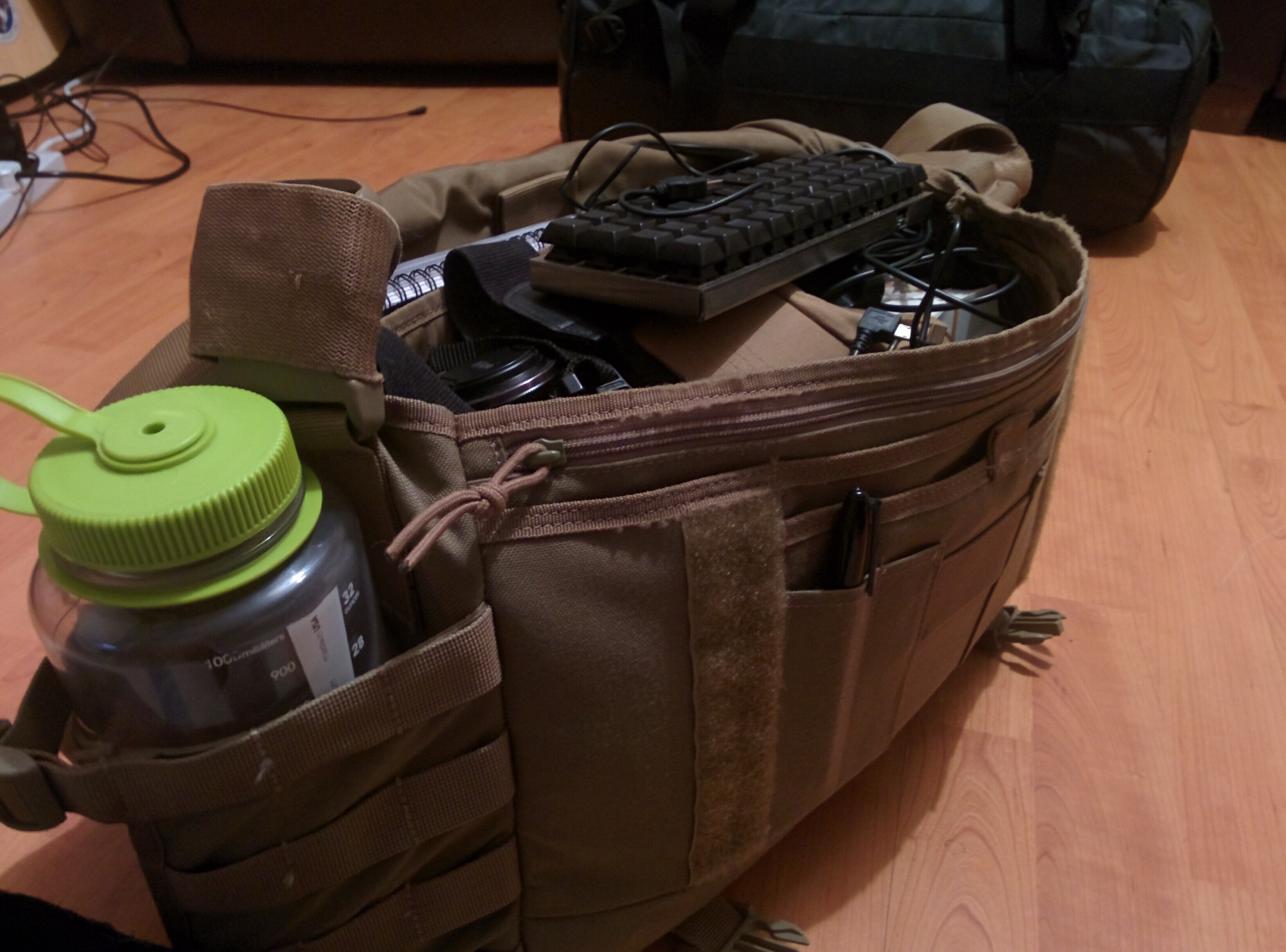
Day 1 became Day 2 with the industry standard partying all night transition.
This morning was a very slow start, with my lightning talk somewhere in there,
talk came out okay I think.
Keeping track of time in here is really difficult, the leds sort of merge
everything together, windows would ruin the atmosphere so that isn't available
as a measure of time. We know that day lights hurts hackers brains.
So far things have been a flop on the project front. The congress network
doesn't support multicast on the wireless, the wired segment is fine, but it
has caused us to run out of steam. Multicast traffic on the wifi has to be sent
at the lowest rate connected clients support, this burns a lot of airtime
leaving multicast blocked on wifi access points.
The UDP panel hasn't been set up yet, the projector didn't make the trip across.
Reading:
Fahrplan

The first day and their are some excellent sessions lined up. All of the talks
are recorded, I normally catch up with the talks that catch my interest after
the event.
At congress it is best to hit the self organised sessions, they aren't recorded
and are almost always excellent. Because they are excellent they are really
hard to attend, loads of other people show up. The good sessions are standing
room only with the corridor completely full too.
- [Are_decentralized_services_unable_to_innovate][1]
- [Mechanical_Keyboard_Meetup Tryout][2]
- [We Fix the Net][3]
In the past I lined up a busy schedule for the congress and ended up not going
to any of the sessions. This year I am going to try and drop in and out of
events, the sessions above are more of an intent that a plan.
The We Fix the Net session is really interesting, instead of a single event
they have an afternoon of panels lined up. They are more focused on security
aspects than transport, it should be a highlight of the event.
Reading:
The Fahrplan, if anything

It starts!
Flight worked out well, the delay I had setting off from Aberdeen shortened my
transfer, but it didn't hold anything up. I made it into the congress center
around half three and was too early to get a ticket.
Rest of the day went into setting up blinkenlights and other important
projects. Tomorrow I will explore the place and see what is going on.

I think the guy that brought my breakfast told me off for the table I was
using. He said something, thankfully my amazing Shure SE215 isolating earphones
blocked all of the sound out. I have a reason to be ignorant. I am sitting in a
bar place, but I bought food so I could sit at a sensible height and type.
I figure the main purpose of airport seating is to stop you complaining and to
keep you awake. The lack of somewhere to sit your laptop and type like a normal
human is infuriating.
This coffee isn't even good.
ABZ->LHR->HAM
Reading:
Nemesis Games, Or Nothing
And by nothing I mean I don't think I will get any more reading done this year.

Weather is getting cold, the storms have been beating the house.
Time to leave for somewhere, well somewhere not warmer, just different. Packing
for congress was made much harder by ridiculous shipping regulations, an extra
couple of bottles in my bag are worth it for the fun of a buckfast party night.
The pico projector was one of the first victims in the packing war, having
spent more time with this projector I don't think it is going to be a big loss.
I still have the udp panel and the slowtv project, with the lightning talk I
probably have enough details to worry about at congress..
Reading:
Nemesis Games




